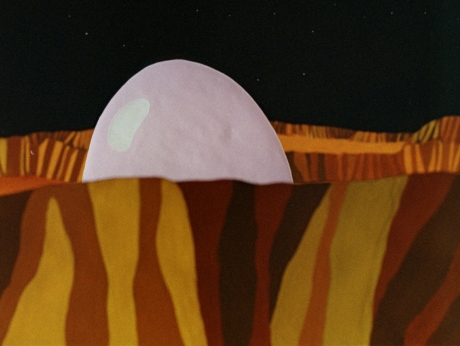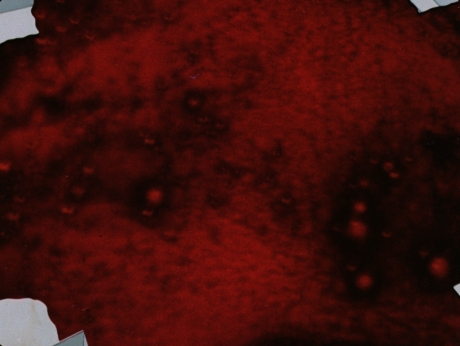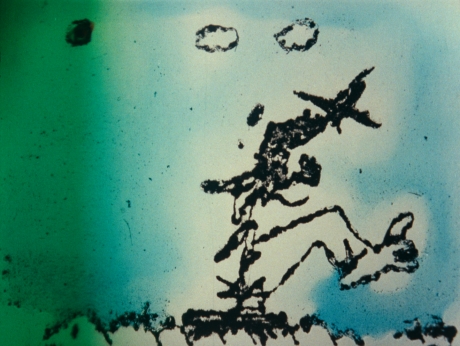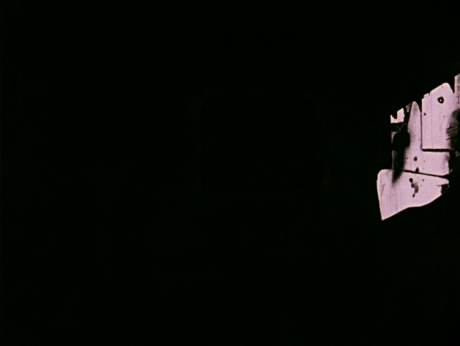
 overview
overview

 storyline
storyline
A mechanical beetle is launched into interplanetary space and lands on an unknown planet right in between two enemy armies getting ready to fight. A battle between pepsi and coca-cola begins. The beetle, carried by the strength of evaporating bubbles, again lands in interplanetary space. When it is getting closer to Earth, its sits on a space station and causes some disruptions. It flies further, passing an orbit of “fast cars”, until it reaches a planet made of musical instruments. Later on during its trip, it flies by a planet “in revaluation” and lands on the mysterious Fort Knox 2, where it is photographed, comprehensively examined and thrown once again into interplanetary space. Finally it falls on a forest glade. Here a mysterious hand reaches for it and places it in an effective cosmos collection as the new showpiece “Jasio the wanderer”.

 comment
comment



















It seems that Kiwerski belongs to the group of inside concentrated loners who do not strictly represent any trend, style, manner or fashion. He is fascinated with the complicated relations and interconnections between man and machine just before the start of the 21st century. The biography of shovels, their agonies and epitaphs, hydraulic landscapes, blooming pumps, aesthetic catastrophes and innocent crashes - this amusing literature, full of distance, which creates the titles of images is for Kiwerski only an excuse to show humanized machines warming themselves in the sun, shamelessly laying in the grass, covering the sky and trees, eating up the landscape, emanating with a dangerous poetry of civilization.
Monika Teresińska, Niespokojny, „Zwierciadło”, 1980, nr 12
Jasio from the title is a mechanical beetle who gets launched into interplanetary space due to an unforeseen coincidence. In its journey it visits one planet after the other. They are amusingly characterised by their visual form, often inspired by cultural tradition, especially by cinema and mass media. These visual quotations have a collage character in many of the sequences. The beetle – a wanderer – meets American selenonauts and the Immortal Tramp, Charlie Chaplin in a dump of gadgets and waste from societies with a consumption culture. Further in his journey Jasio is stopped on a pedestrian crossing by Donald Duck himself, while August Rodin’s “Thinker” flies in interplanetary space on a deserted island. Wojciech Mischke, Fantazja, sztuka i nauka, „Kino”, 1985, nr 6
“Jasio” (1979) is Krzysztof Kiwerski’s third science fiction story, following the “Breakdown” (1975) and “UFO” (1978), meant for the young audience (although not only). The two previous films were awarded at the Polish Film Festival for Children and Youth in Poznań (1977 and 1979) with Golden Goats awards in the animated film category. “Jasio” was awarded as well, but with a Silver Goats award in 1981. “The Breakdown” ,”UFO” and “Jasio” are narratively quite similar. Each story ends with a surprising, amusing point (in “Jasio” it is less amusing, because the main character ends his journey as a showpiece in a large exhibition). There are no words in any of the films, the image fully co-plays with the narration, and the soundtrack (containing mainly “cosmos” music) by Marek Wilczyński perfectly completes it. “Jasio” in contrary to the other films is in the convention of a road movie. It is not just a interplanetary journey, but also a journey through Earth’s culture. The cosmos beetle meets the August Rodin’s famous sculpture “The Thinker”, Donald Duck, Superman, the Yellow Submarine, and Einstein giving his famous formula over the phone on its way. In “Jasio” Kiwerski also refers to his own films: “Chance?”, realized two years earlier (1977), and “The Thinker”, which… he will make a year later (1980). Jerzy Armata